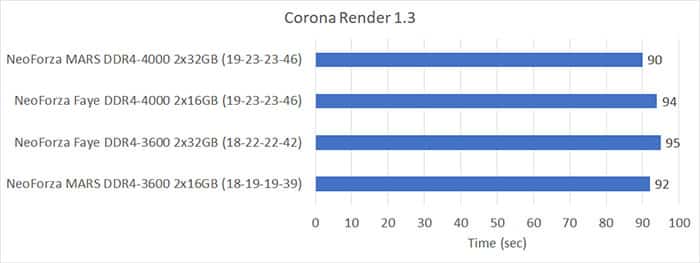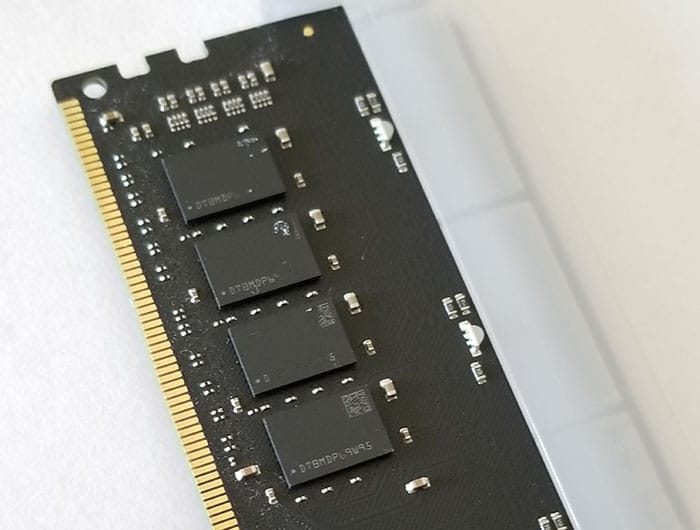Introduction
The Neo Forza brand is a relatively new player in the DRAM memory modules and flash memory products that established in 2018. However, its parent company Goldkey has been in the tech industry for over 21 years. Backing by the expertise of its parent company’s design and manufacturing, the Neo Forza is looking to compete in the enthusiasts markets with high performance products at an affordable pricing.
We previously reviewed the company’s high performance Faye DDR4-4600MHz memory, and today we will take a look at the gamer oriented Mars DDR4-4000 2x32GB dual channel kit RAM.
Neo Forza Mars
Neo Forza carries both desktop and laptop memory modules. The company targets its memory toward gamers and enthusiasts that demand high performance memory module. Currently, Neo Forza has four lines of memory: Gold Encke, Black Faye, PnP, and Mars. Among them, the Mars is the most flashy model that is aimed toward gamers and streamers who wish to have a memory module that only delivers good performance but also carries a bit of personality with the integrated RGB effect.
Specification
The Mars is available in DDR4 frequency ranges from 3,200 MHz all the way up to 4,400 MHz. It is available in dual channel configuration with total storage capacity from 16GB, 32 GB and 64GB. Our review unit is the 2x32GB DDR4 running at 4,000 MHz.
Shipped in a black cardboard box, the retail box includes the memory module’s specification and its features.
Inside, we have a see through plastic clamshell packaging where the Mars requires minimal effort to open and no special tool is needed. Our review sample features black heatspreader with the LED strip on top.
The DIMM module has a black PCB with a two tone gray and black aluminum heatspreader. The heatspreader is designed by the in house IB-Cool team. If black and gray is not your cup of tea, there is also an option for red heatspereader with black PCBs that offers more contrasting look. The red and black contrasting color looks quite nice which would be our choice of RAM is we are shopping for one. Though, we do not mind the black and gray especially since we get the LED strip on the top of the modules which brings out a little personality to the RAM. The Neo Forza logo is stamped on the center of the heatspreader with cutouts on either side. The heatspreader reminds me of an evil robot’s eye. Not contend with just one logo on the heatspreader, there is additional cutout on the top of the heatspreader to allow LED light pass through.
The LED diffuser on top of the module is beveled with sharp edge like a razor blade. It features non-overlapping light guide design and water flow effects. It is compatible with with the motherboard’s software such as Asus Aura Sync, ASRock Polychrome Sync, Gigabyte Fusion 2.0, and MSI Mystic Light Sync.
The MARS is tall as the module measures just shy of 2 inches. However, we did not have issue with our Noctua NH-D14, one of the biggest cooler available.
Sixteen chips are on both sides of the DIMM for a total of 32GB per stick. The chip of choice is SK Hynix.

Running the memory at DDR4-4000MHz needs a little bit extra voltage, 1.4V to be exact, than the standard DDR4 1.2V. This should not be an issue for most motherboards. The timing on the Mars is kept at relatively loose at 19-23-23-46-70. One XMP profile is configured at the specified speed and timing. In addition, the JEDEC SPD of 2,666 MHz is present with timings of 20-19-19-43 as a fall back setting.
Despite being a relatively newcomers to the DRAM market, we are glad to report that Neo Forza offers limited lifetime warranty for the memory module. So rest assured that should there be any issue, you would be taken care of.
Overclock
Okay, let’s get the overclocking out of the way.
We install the Neo Forza MARS into our Asus TUF Gaming Z690 Plus WiFi D4 motherboard with Intel Core i5-12600K processor. The Intel’s Z690 chipset officially supports DDR4 up to 3200 MHz and most system should be able to run memory at 3600 MHz without much trouble. Running any speed beyond 3600 MHz will depend on the motherboard, the memory chip, and the memory controller. The Z690 has two gears for the memory controller. The gear 1 runs the memory controller and the frequency at 1:1 ratio, ie matches the memory controller to the memory frequency. The gear 2 runs the memory controller and the frequency at 1:2 ratio, ie the controller runs at half of the speed of the memory frequency.

Unfortunately, we could only edge out 200 MHz more out of the memory. We are able to get the memory to run at 4,200 MHz with 19-26-26-46 timings at 1.42V, just 0.02 volts from the stock. Raising the voltage even higher to 1.45V would not allow us to push the memory more. We probably could push the memory a little further than that but we want risk damaging the modules.
Testing results
AIDA64


The default latency on the MARS is on the higher side.


Geekbench


Geekbench 5 single core prefers low latency whereas the multi-core really prefer higher frequency.
Rendering
We use Cinebench R23, Blender 2.931, and Corona 1.3 to test the rendering tasks.


The scores are virtually tied here though we do see that tighter timings edges out a few extra points here.

However, the MARS leads the pack with this benchmark.
Gaming



System Performance

Conclusion

Sadly, it seems that Neo Forza has push the memory as far as it could as we could not edge out more than 200 MHz from the memory module. Granted we did not want to risk of damage the RAM and stayed at 1.45volts. Nonetheless, we feel that this is really not a major cons for recommending the MARS to anyone who simply want a good looking 64GB of RAM that can handle 4,000 MHz of speed without any hassle. For that, the MARS certainly delivers. We are glad that Neo Forza is backing the memory with lifetime warranty. Thus, should there be any issue arise with these modules, you can sleep soundly that that it would be taken care of.
 Bjorn3D.com Bjorn3d.com – Satisfying Your Daily Tech Cravings Since 1996
Bjorn3D.com Bjorn3d.com – Satisfying Your Daily Tech Cravings Since 1996










